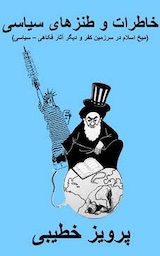The Markaz Review:
The world, it seems, is divided between calling Israel’s onslaught against Gaza a case of genocide, versus those who support the “self-defense” argument, in which many of the Palestinians being killed are either Hamas fighters or supporters, and the rest are collateral damage. With the majority of the dead being children and women, however, it is difficult to sustain that argument. [longread]
Sheryl Ono
My family, like so many other Jewish families, has been at war since October 7. None of us are in uniform, but we’re barely speaking — and once I publish this, I’m afraid that the rift with some of them could be lasting. If I don’t publish, I know that living with myself will be impossible.
On the day that Hamas attacked Israel, we were united in horror, texting each other with news updates or just to connect. I couldn’t stop reading the back stories of the hostages, many of whom were peace activists. When I closed my eyes, I struggled to not see young people running from a barrage of bullets.
But then came Israel’s response, launched like the apocalypse. “I have ordered a complete siege on the Gaza Strip,” said Defense Minister Yoav Gallant on October 9. “There will be no electricity, no food, no fuel, everything is closed. We are fighting human animals and we are acting accordingly.” He informed his troops that all restraints on their conduct had been lifted. To hammer the point, Prime Minister Benjamin Netanyahu made annihilation a religious obligation. “You must remember what Amalek has done to you,” he said in a public address at the start of the ground invasion.
Go to link










Comments